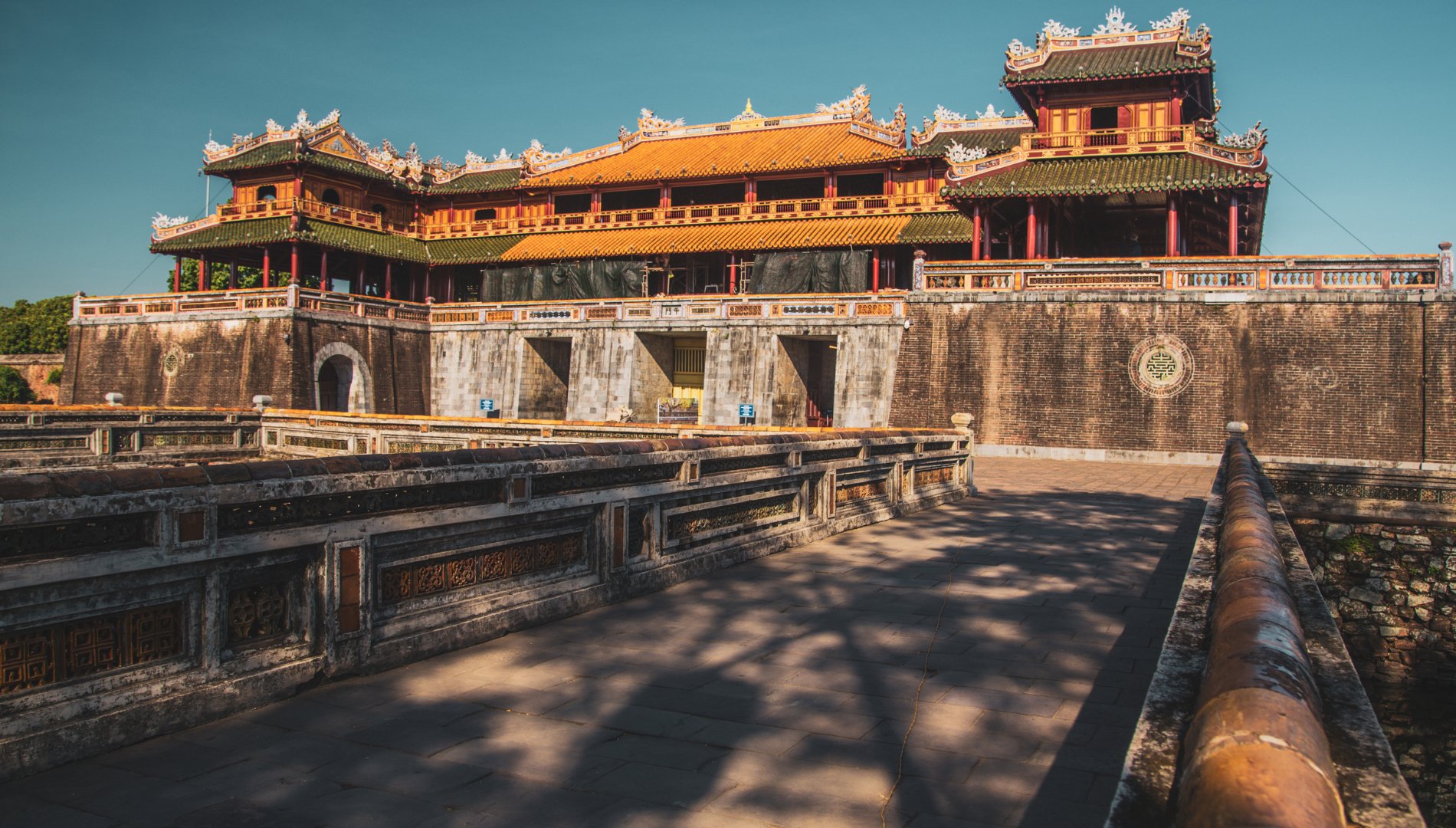Initial information from Hue City about the incident of a tourist deliberately destroying a national treasure – the Nguyen Dynasty throne has shocked public opinion, arousing a wave of indignation in the community. The incident is not only an act of property destruction but also a serious insult to the nation's precious cultural heritage.
Recently, at Thai Hoa Palace in Hue Imperial City, a man brazenly climbed over the protective fence and broke some parts of the throne. This act of vandalism was strongly condemned by the public, those who love and appreciate historical values. Immediately, Director of the Department of Cultural Heritage Le Thi Thu Hien took drastic actions, sending an urgent dispatch to the Hue Monuments Conservation Center. The dispatch requested an urgent inspection and assessment of the current state of damage to the throne, and at the same time proposed solutions for handling and preserving it in accordance with the provisions of the law on cultural heritage.
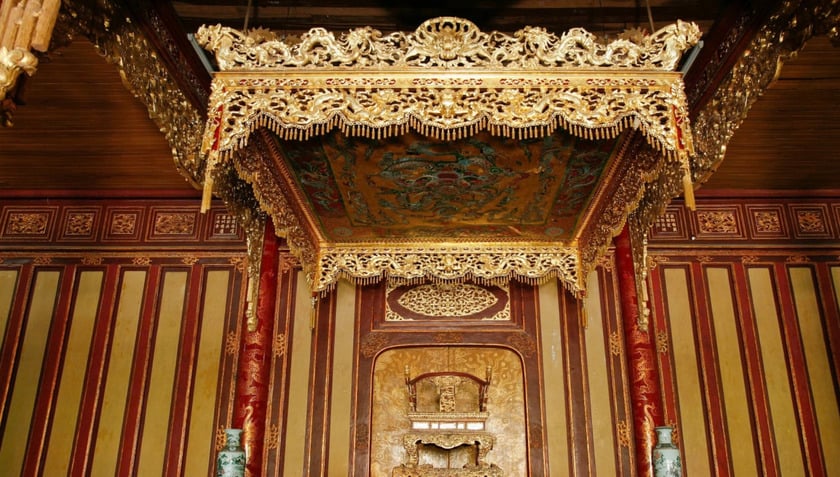
A tourist bought a ticket to visit the Hue ancient capital heritage site, then suddenly sneaked into the restricted area of Thai Hoa Palace, climbed onto the Nguyen Dynasty throne, continuously displayed unusual behavior, and then broke the throne.
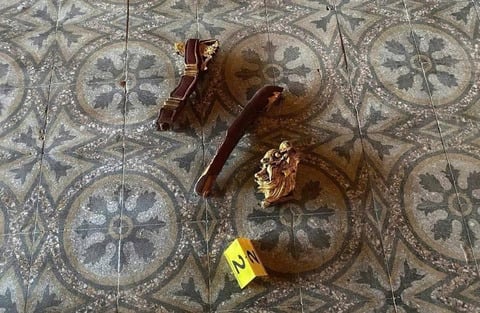
The alleged broken part of the throne
The Nguyen Dynasty throne is the symbol of supreme power of the last feudal dynasty in Vietnam. What makes this throne special is that it is solemnly placed in the main hall of Thai Hoa Palace, the sacred ceremonial space of the royal family. This was once the place where the king held court with his mandarins, the center of all royal ceremonies, where important events such as coronation ceremonies, grand court sessions, receptions of envoys and national ceremonies took place. Therefore, the throne is the embodiment of the absolute authority of the emperor, the one "given by heaven" to rule the world.
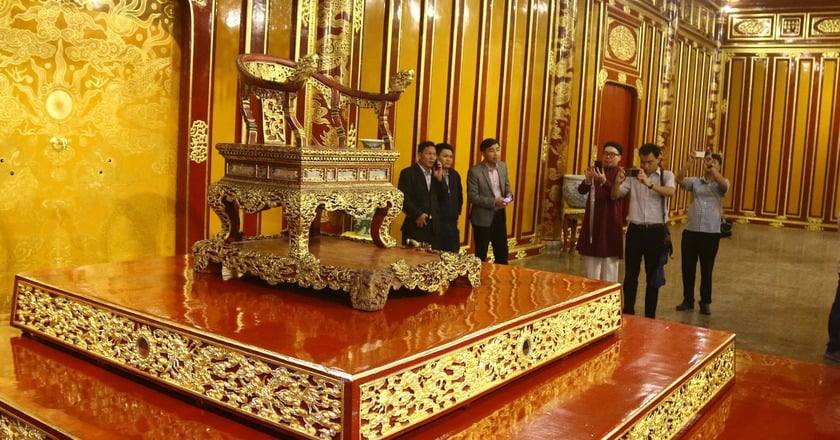
The Nguyen Dynasty throne is a national treasure of great historical and cultural value.
The throne has impressive dimensions: 101 cm high, 72 cm wide, 87 cm long; the base is 118 cm long, 90 cm wide, 20 cm high. Above the throne is a splendid golden steel canopy, creating a magnificent look. The entire artifact is meticulously crafted from precious wood, gilded with gold and delicately carved with hidden dragon and cloud motifs - the image symbolizing the emperor in Eastern thought. In particular, the back of the throne stands out with the image of "long van khanh hoi", surrounded by dragon heads facing the center, expressing the idea of the world submitting to one source, with the king as the center of the universe. In addition to its historical and political value, the throne is also a unique work of art of Hue royal art, demonstrating the talent and sophistication of ancient artisans.
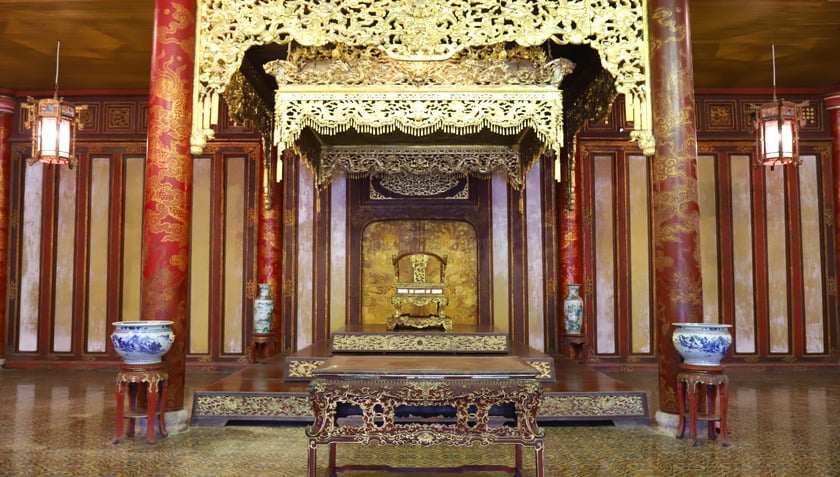
This national treasure once stood tall in the main hall, telling the story of Vietnam's last feudal dynasty.
According to researchers, the throne dates back to the reign of King Gia Long or King Minh Mang, that is, in the early 19th century. This was an important period that laid the foundation for the ritual system and centralized power of the Nguyen Dynasty. Surprisingly, the Nguyen Dynasty throne has never been lost or left Thai Hoa Palace throughout its more than 200-year history. Even when the feudal regime collapsed in 1945 with the abdication of King Bao Dai, the throne was still kept intact.
After 1975, the restoration and conservation of the throne has been stepped up. In particular, since the Hue Monuments Complex was recognized by UNESCO as a World Cultural Heritage in 1993, the throne has become one of the top priorities in conservation work. In January 2016, this artifact was officially recognized as a National Treasure, affirming its special historical, cultural and artistic value.
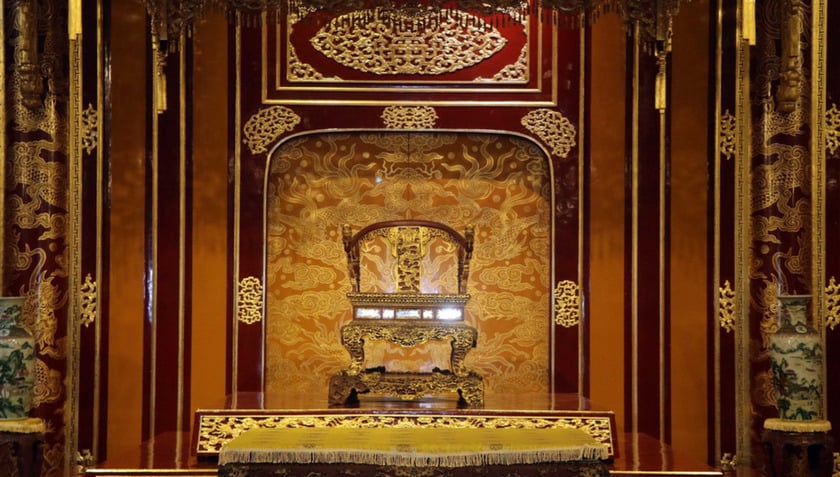
Every time the king sits on the throne, that is the time when orders are issued from the Son of Heaven, that is the time when all the mandarins must bow down in obedience, showing the majesty and steadfastness of the dynasty. That is also the place where all eyes and all respect of the subjects gather.
The act of infringing upon or destroying cultural heritage is a serious crime and is clearly prohibited by Vietnamese law. Clause 2, Article 9 of the 2024 Law on Cultural Heritage specifically regulates this, and the Penal Code also has corresponding sanctions. Accordingly, those who destroy heritage will be handled depending on the level of violation, from administrative sanctions, fines, non-custodial reform to imprisonment.
In the case of the Nguyen Dynasty throne being damaged, the Hue Monuments Conservation Center will invite leading experts and artisans to assess the extent of the damage and develop a suitable restoration plan, ensuring maximum integrity for the treasure. At the same time, this is also a great lesson for the Center to review and develop a plan to ensure tighter security and safety in the entire heritage site, especially for artifacts, antiquities and national treasures.
According to the management board, this is an extremely rare and unacceptable situation. To prevent similar incidents in the future, they will focus on increasing the number of security equipment, support tools, and organizing training to improve the skills of the security team. The goal is to detect and prevent suspicious phenomena early, ensuring that the priceless heritage of the nation will always be absolutely protected. This incident once again sounds the alarm bell about the awareness of preserving cultural heritage in the community.





